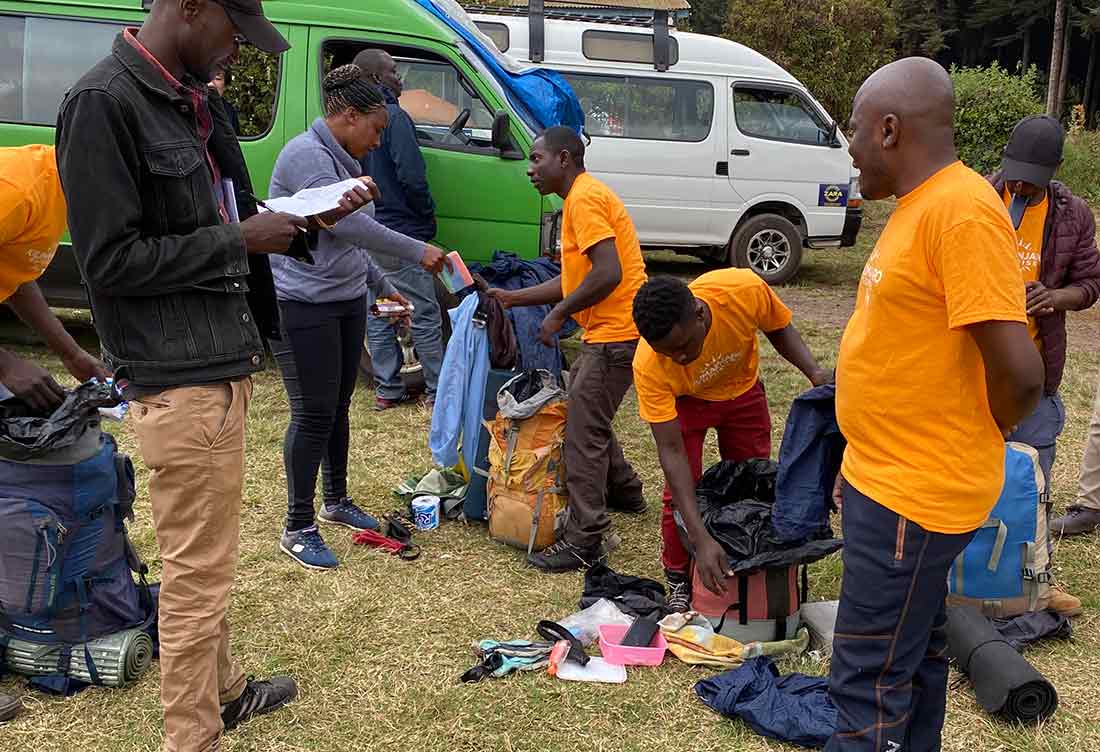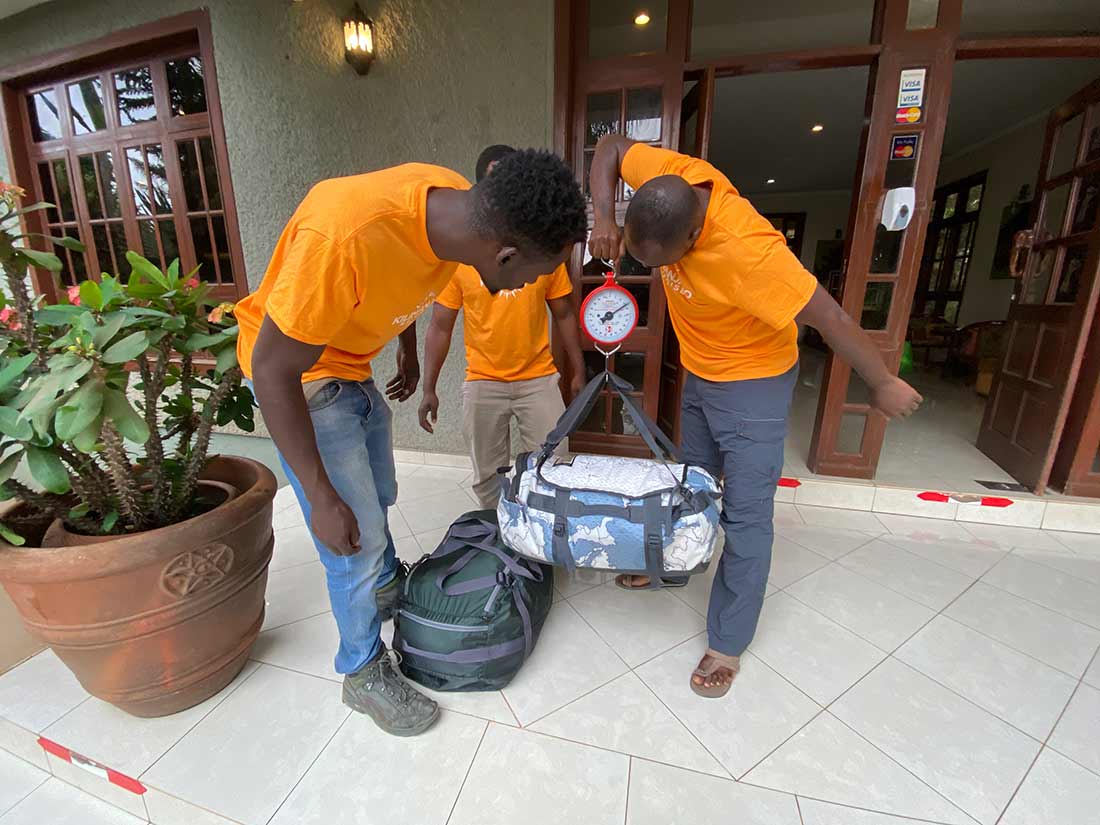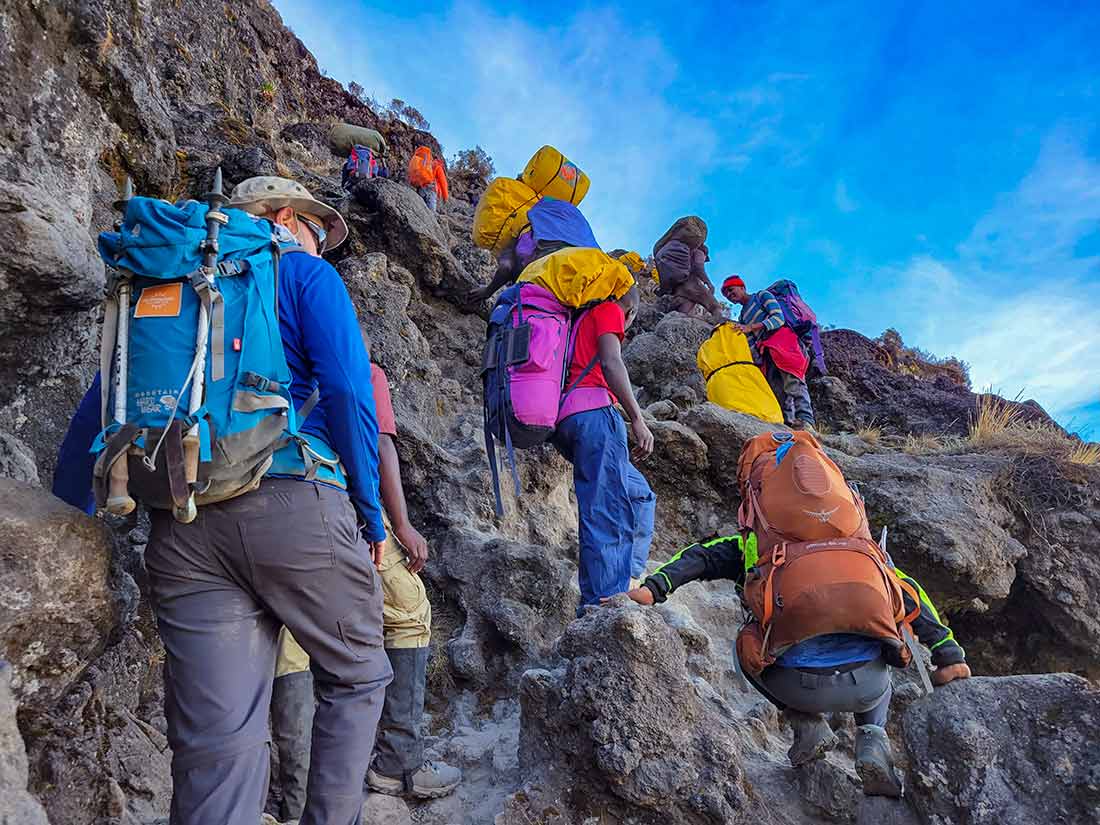The amount of weight that people carry when climbing Kilimanjaro can vary depending on several factors. These include the length of their trek, their level of support from porters or guides, and personal preference.
Typically, climbers carry a daypack with essentials such as water, snacks, and warm and rain clothing for the day’s hike. They may also carry camera equipment and trekking poles.
Porters

Porters are responsible for carrying the bulk of the gear. This includes tents, sleeping bags, water, and cooking equipment.
Kilimanjaro Porters Assistance Project (KPAP) regulates the weight limit that porters can carry on Kilimanjaro. KPAP dictates that porters should not carry more than 33 pounds (15kg) of weight. They will weigh your duffel bag at the hotel before going up Kilimanjaro. The park rangers will then reweigh all bags at each camp to make sure that more items were not added to a bag.

Daypack
With these factors in mind, How much weight do you carry on Kilimanjaro? Climbers should limit their daypack weight to around 10-12 pounds (4-5kg) to reduce the strain of hiking each day.
However, the exact weight that climbers carry can vary depending on their individual needs, weight, and personal preference. Some climbers may choose to carry more weight, such as extra clothing or personal items, while others may opt to carry less.
It’s important to note that carrying too much weight can increase the risk of injury or exhaustion. It’s essential to pack wisely and only carry what is necessary.
At each trip briefing the guides will tell you how much water to bring for the following day’s hike. They will address the number of hours you’ll hike and the elevation gain. Based on this information, a climber can then determine the number of snacks to pack.

At the initial trip briefing, the guides will also inspect your gear to make sure you have everything you’ll need. They will also have you leave any items not needed on the mountain in a secure room in the hotel.
Training
Even though you are only going to carry about 10-12 pounds each day, we encourage you to train for your Kilimanjaro climb with more weight.
If you have never backpacked before, start light—just a few pounds. Increase the amount of weight in your pack as you increase the length and elevation of your training hikes.
As your climb dates approach, continue increasing your load until you find it easy to carry at least 20% of your body weight.
Follow these very general guidelines for your pack weight:
A loaded backpack should not exceed 20 percent of your body weight. For example: If you weigh 200 pounds, your pack should not exceed 40 pounds for backpacking.
A loaded day hiking pack should not weigh more than about 10 percent of your body weight. Example: If you weigh 200 pounds, your pack should not exceed 20 pounds for hiking.
Final Thoughts
With proper training and knowing how much weight you’ll carry on Kilimanjaro, we hope that these guidelines make your Kilimanjaro climb a memorable one. We want your climb to be as enjoyable as possible. We don’t want you to look back on your trip with regret and commiserate about how difficult it was, but rather what an amazing time you had.




